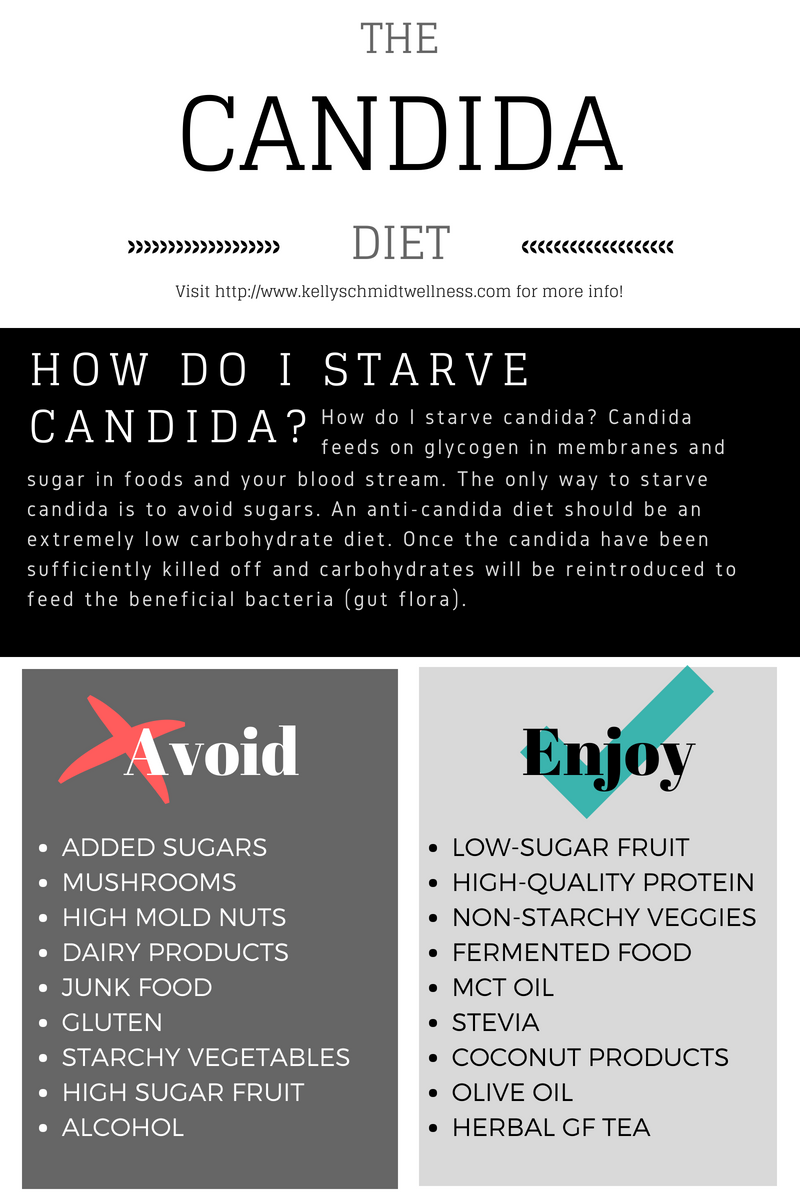
Yet, what is Candida?
Candida is yeast commonly present in the gastrointestinal tract with no ill effects, but when it becomes invasive it can cause a host of issues. And, of course, yeast infections can occur in various parts of the body.
Symptoms:
- Anxiety, depression and mood swings
- Nail or skin fungus, athlete’s foot, or vaginal yeast infection
- Chronic sinus or ear infections
- Sore muscles and joints
- Food sensitivities
- Feeling chronically fatigued
- Poor memory and brain fog
- Constipation or diarrhea
- Frequent bloating and gas
- Environmental sensitivities
- Feeling worse on damp or humid days
- Insomnia
- Low blood sugar
- PMS
- Endometriosis
- Ringing in the ears
- Headaches
- Sensitivities to strong chemical smells
- Cravings for bread, cookies, sugar, other carbohydrates, or alcohol
How to starve candida?
Candida feeds on glycogen in membranes and sugar in foods and your bloodstream. The only way to starve candida is to avoid sugars. An anti-candida diet should be an extremely low carbohydrate diet. Once the candida has been sufficiently killed off and carbohydrates will be reintroduced to feed the beneficial bacteria (gut flora).
Avoid:
- Added Sugars – Like honey, agave, sugar, coconut sugar, etc.
- Mushrooms
- Nuts – Especially avoid high mold nuts like peanuts and cashews. Safer/better nuts include: almonds, walnuts, pecans and hazelnuts
- Dairy Products – (unless Ghee or is fermented and dairy is tolerated)
- Junk food
- Glutinous Grains – (wheat, barley, rye, non-certified gf oats) – seek gluten free
- Starchy vegetables – (potatoes, carrots, sweet potatoes, yams, beets, peas and parsnips)
- High sugar fruits – (like dried fruit and fruit juice)
- Alcohol
- Minimize caffeine
Enjoy:
- Small amounts of low-sugar fruits – Cranberry, raspberry, strawberry and kiwi fruit
- High-quality animal protein – Eggs and seafood
- Healthy fats and oils – Olive oil, linseed (flax) oil, coconut oil, MCT oil, coconut milk and cream (full fat NOT light), coconut Homemade mayonnaise, aioli.
- Non-starchy vegetables – Olives, Garlic, onion, capsicum, zucchini, chilli, tomato, broccoli, cauliflower, Brussels sprouts, red radish, daikon radish, carrots, etc.
- Fermented Foods
- Chicory coffee and herbal teas (make sure the tea does not have gluten in it)
- Stevia
- Herbs – Parsley, lettuce, rocket, sage, mint, thyme*, oregano*, Vietnamese mint*, Dorrigo pepper*, mountain pepper*, cardamom, cinnamon, coriander, radishes*
Recovery:
Once a healthy balance of gut flora has been established we need to feed the healthy microbes by reintroducing carbs. Continue to avoid or restrict refined sugars, sweets, and sugary drinks, white bread, white rice, white pasta, yams, big starchy potato and sweet potato. Reintroduce healthy cereals and grains including millet, buckwheat, rye, oats and barley, if tolerated. Legumes are better tolerated and easier to digest if they are sprouted.
Click here to download a Candida Diet Printable!
Have more questions? Send me an email ([email protected]) or comment below.



Leave A Comment
You must be logged in to post a comment.